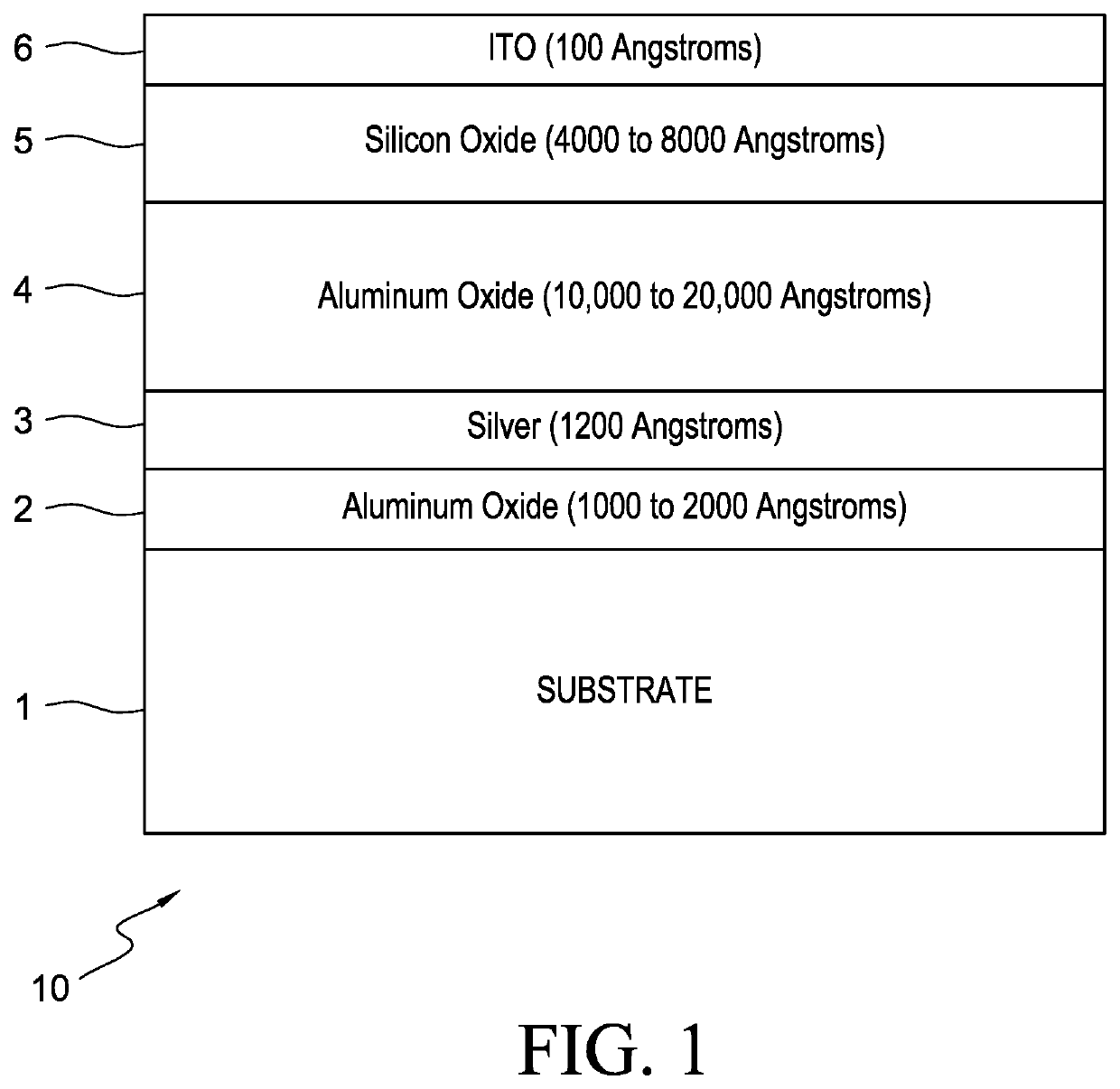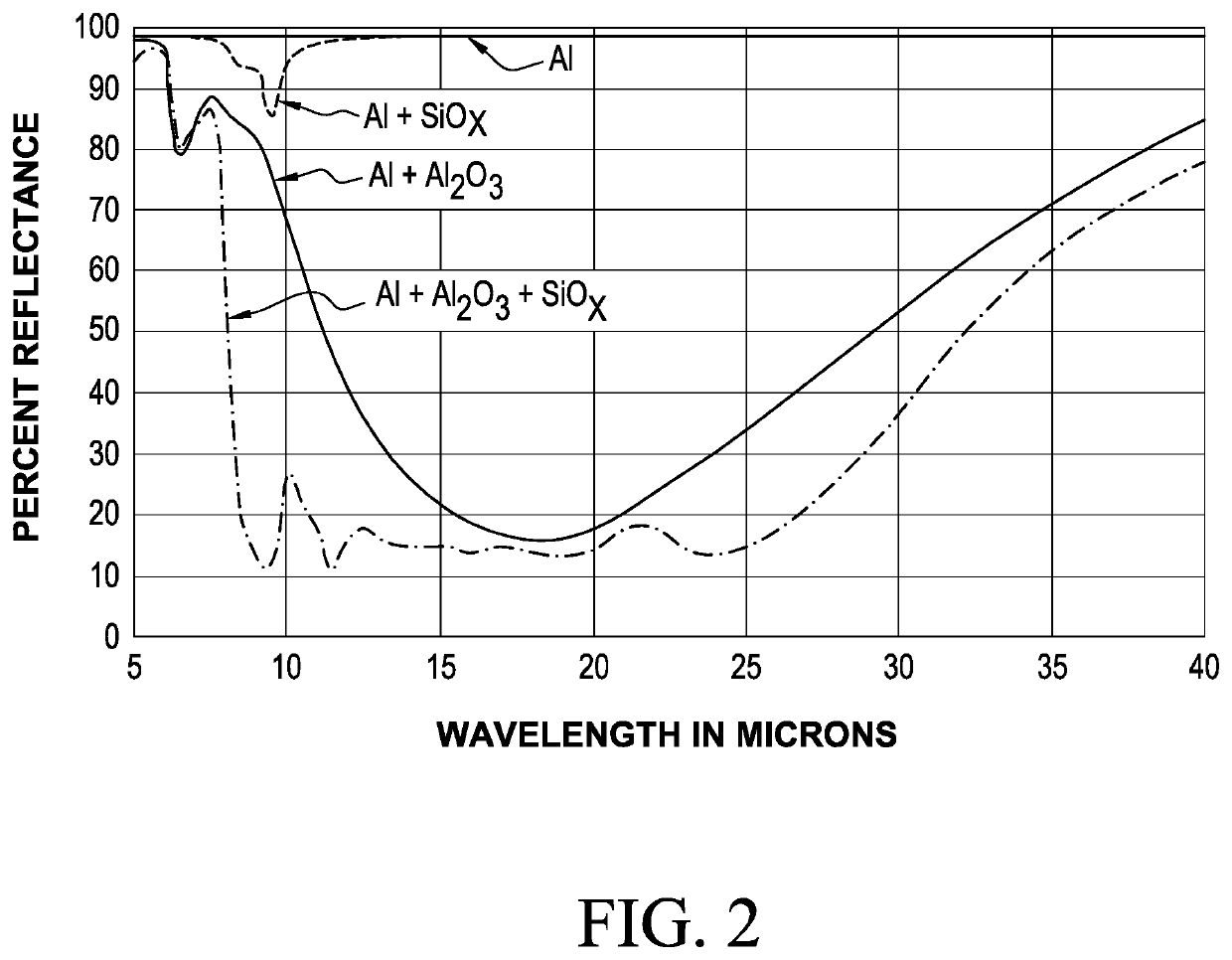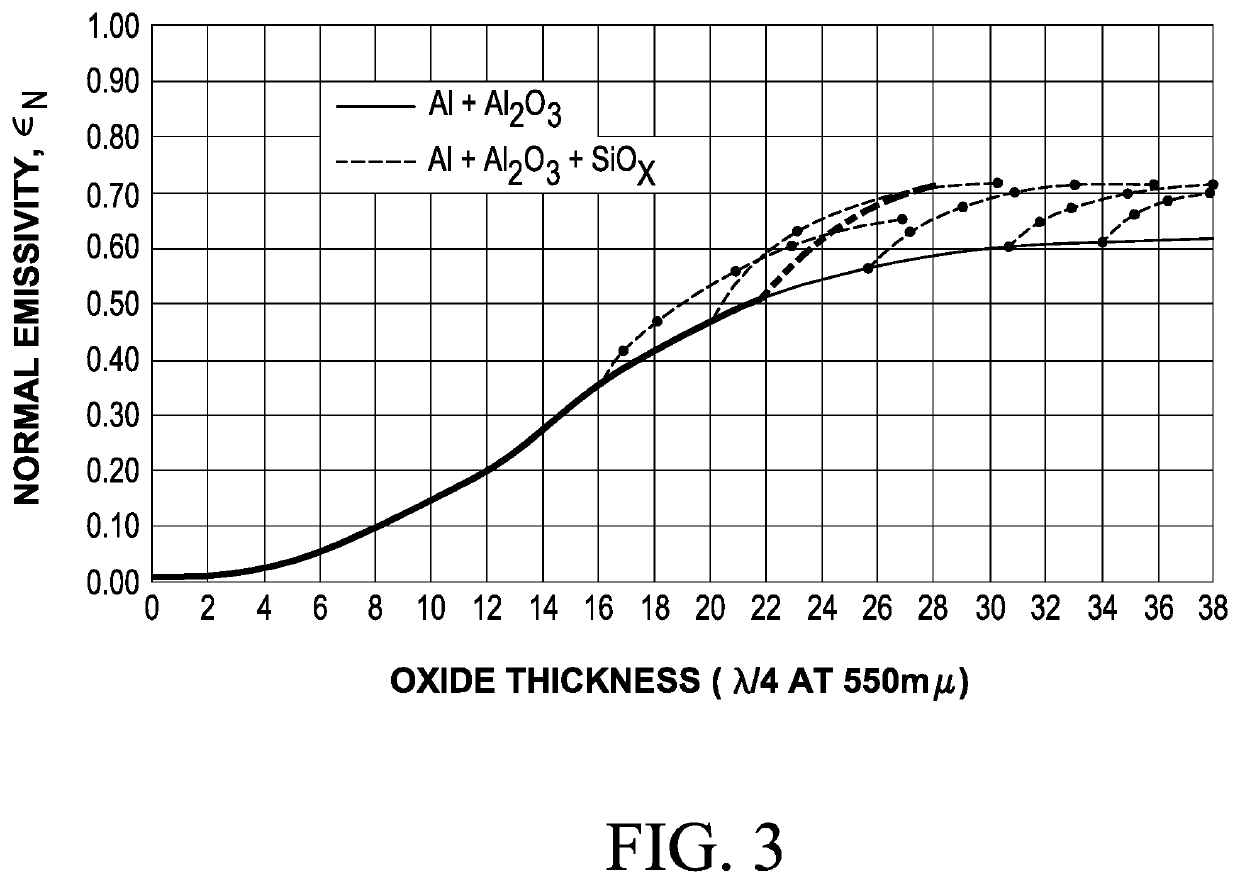Coatings for multilayer insulation materials
a multi-layer insulation and coating technology, applied in the field of multi-layer insulation materials, can solve the problems of low solar absorption ratio, easy damage or removal of ito coating on silver teflon, film is prone to overheating in sunlight, etc., and achieves the effect of selectively increasing or decreasing reducing and increasing the solar absorption ratio
- Summary
- Abstract
- Description
- Claims
- Application Information
AI Technical Summary
Benefits of technology
Problems solved by technology
Method used
Image
Examples
example 1
mittance of Polyimide Films with GCC Multilayer Coatings
[0105]A conductive black Kapton® polyimide film was sequentially coated with a 500 angstrom layer of NiChrome alloy; a 1200 angstrom layer of silver; an ˜15,000 angstrom layer of aluminum oxide; and a ˜4,000 angstrom layer of silicon oxide. The polyimide film was 24 inches wide, and was fixed to the outer surface of a rotating drum. The various layers were evaporated from target materials in a graphite crucible using an electron beam, and deposited onto the polyimide film at a rate of between 2 and 4 angstroms per second. A central band of the film on the rotating drum was closer to the crucible than the edges of the film; a deposition baffle was used to partially protect this central band from excessive deposition and ensure an even film thickness across the width of the film. A second black polyimide film was coated in the same manner as the first film, and served as a control film.
[0106]The thicknesses of the deposited oxide...
example 2
e of Polyimide Films with GCC Multilayer Coatings
[0108]A series of black Kapton® polyimide films was obtained, as shown in Table 2 below. Two types of polyimide films were used in this example. Several films, including Kapton® 275XC, 160XC, 100XC, 200DR FC, 200DR BC, and 350DR FC, are single layer polyimide films. These films are conductive films loaded with conductive carbon. The films have black matte surfaces, and are durable from −270° C. to 270° C. Films 2 through 4 in Table 2 below are single layer polyimide films, and have front and back surfaces with similar resistivities.
[0109]Kapton®200RS100 in Table 2 below is a two layer polyimide film. On one side is a dielectric conductive film loaded with conductive carbon, while the other side is a dielectric polyimide film. The conductive surface of the film has a black matte surface, while the dielectric surface is smooth and shiny. The two layer polyimide film is durable from −270° C. to 270° C. The Kapton® XC1000, XC600, XC3500, ...
example 3
orbance / IR Emittance Ratio of Polyimide Films with GCC Multilayer Coatings
[0114]The IR emittance of the films of Table 2 was tested as a function of distance across the film, and the results for Goddard Composite coatings on both the front and back surfaces of Kapton® 200R5100, 275XC, 160XC, 100XC, XC3500, and XC300 films. As seen in FIG. 8, IR emittance one inch from the edge of the film generally ranges from 0.4 to 0.5, while IR emittance 5 inches from the edge of the film ranges from 0.54 to 0.58. Emittance from a Kapton® 100XC film with a GCC multilayer film on the rear surface falls outside these ranges; however, the large dip in emittance 4 inches from the film edge suggests that the Kapton® 100XC film rear surface may have an uneven oxide coating. As shown in FIGS. 6A and 6B, an uneven oxide coating thickness can lead to changes in emittance.
[0115]Table 3 reports values for solar absorbance and IR emittance of GCC-coated polyimide films, as well as resistance of polyimide fil...
PUM
| Property | Measurement | Unit |
|---|---|---|
| thick | aaaaa | aaaaa |
| thick | aaaaa | aaaaa |
| reflectance | aaaaa | aaaaa |
Abstract
Description
Claims
Application Information
 Login to View More
Login to View More - R&D
- Intellectual Property
- Life Sciences
- Materials
- Tech Scout
- Unparalleled Data Quality
- Higher Quality Content
- 60% Fewer Hallucinations
Browse by: Latest US Patents, China's latest patents, Technical Efficacy Thesaurus, Application Domain, Technology Topic, Popular Technical Reports.
© 2025 PatSnap. All rights reserved.Legal|Privacy policy|Modern Slavery Act Transparency Statement|Sitemap|About US| Contact US: help@patsnap.com



